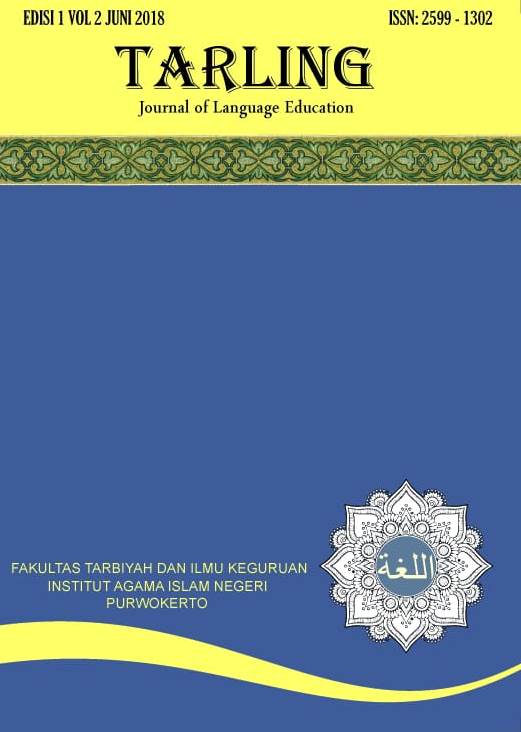نماذج تطوير المناهج التعليمية وتوظيفها في تعليم اللغة العربية للناطقين بغيرها
DOI:
https://doi.org/10.24090/tarling.v6i1.6444Keywords:
الكلمات الأساسية: تطوير، المنهج التعليمي، اللغة العربية، النماذجAbstract
The rapid changes in the era of the Fourth Industrial Revolution prompted impacts on all aspects of life. As a result, it is necessary for those in the field of education, especially Arabic teaching, to quickly adapt to the changes. The objectives of this research are to describe the models of educational curriculum development presented by famous educational scholars, and to reveal their advantages and disadvantages, and to use them in developing curriculum for teaching Arabic to non-native speakers. The researcher used the qualitative approach and library research in which he studied the ideas of experts in the field of education and curriculum in particular. The data was collected by studying books written by experts in the education curriculum and journals about the curriculum in general and the language curriculum in particular. It was analyzed according to the opinion of Mills, Huberman, and Saldana. The results of this research are: (1) There are some educational curriculum models, namely Ralph Taylor, Hilda Taba, Wheeler, Oliva, and Doll models. (2) It is important to develop the Arabic language teaching curriculum by taking advantage of those models and taking into account their advantage and disadvantages. The conclusion of this research indicates that the curriculum plays an important role in the educational process. Therefore, it needs to be developed further.Downloads
Published
2022-08-17
Issue
Section
Articles
License
Authors who publish with this journal agree to the following terms:
- Authors retain copyright and grant the journal right of first publication with the work simultaneously licensed under a Creative Commons Attribution License that allows others to share the work with an acknowledgement of the work's authorship and initial publication in this journal.
- Authors are able to enter into separate, additional contractual arrangements for the non-exclusive distribution of the journal's published version of the work (e.g., post it to an institutional repository or publish it in a book), with an acknowledgement of its initial publication in this journal.
- Authors are permitted and encouraged to post their work online (e.g., in institutional repositories or on their website) prior to and during the submission process, as it can lead to productive exchanges, as well as earlier and greater citation of published work (See The Effect of Open Access).








